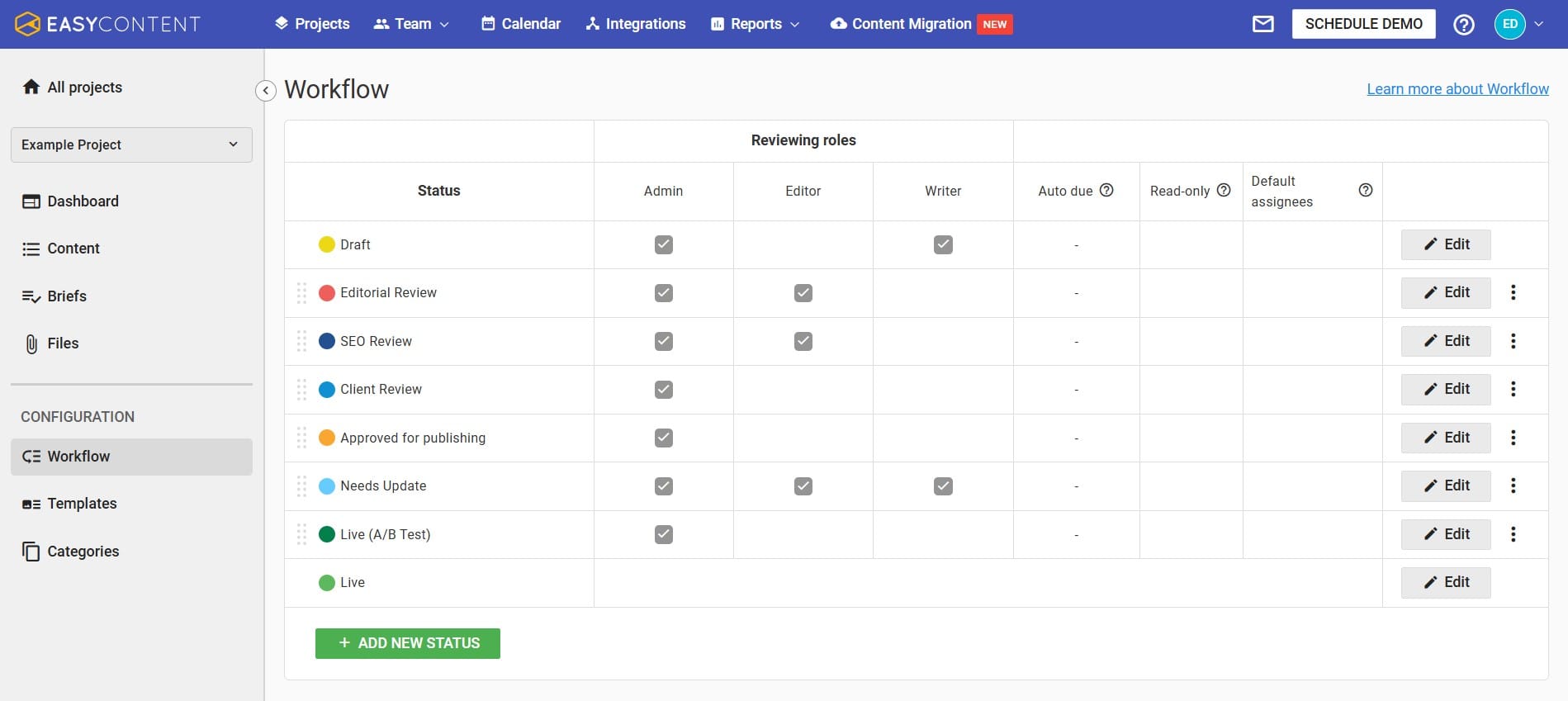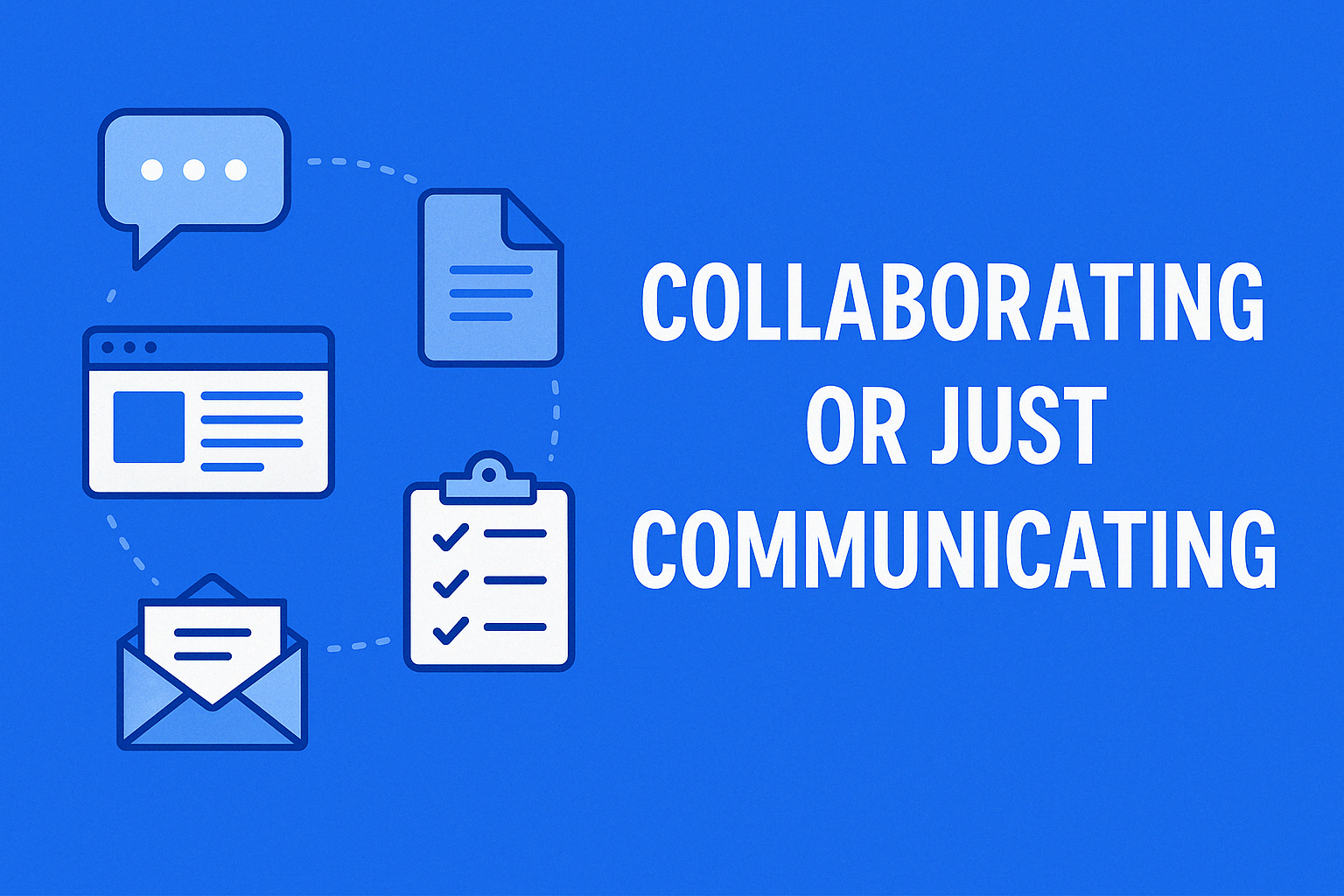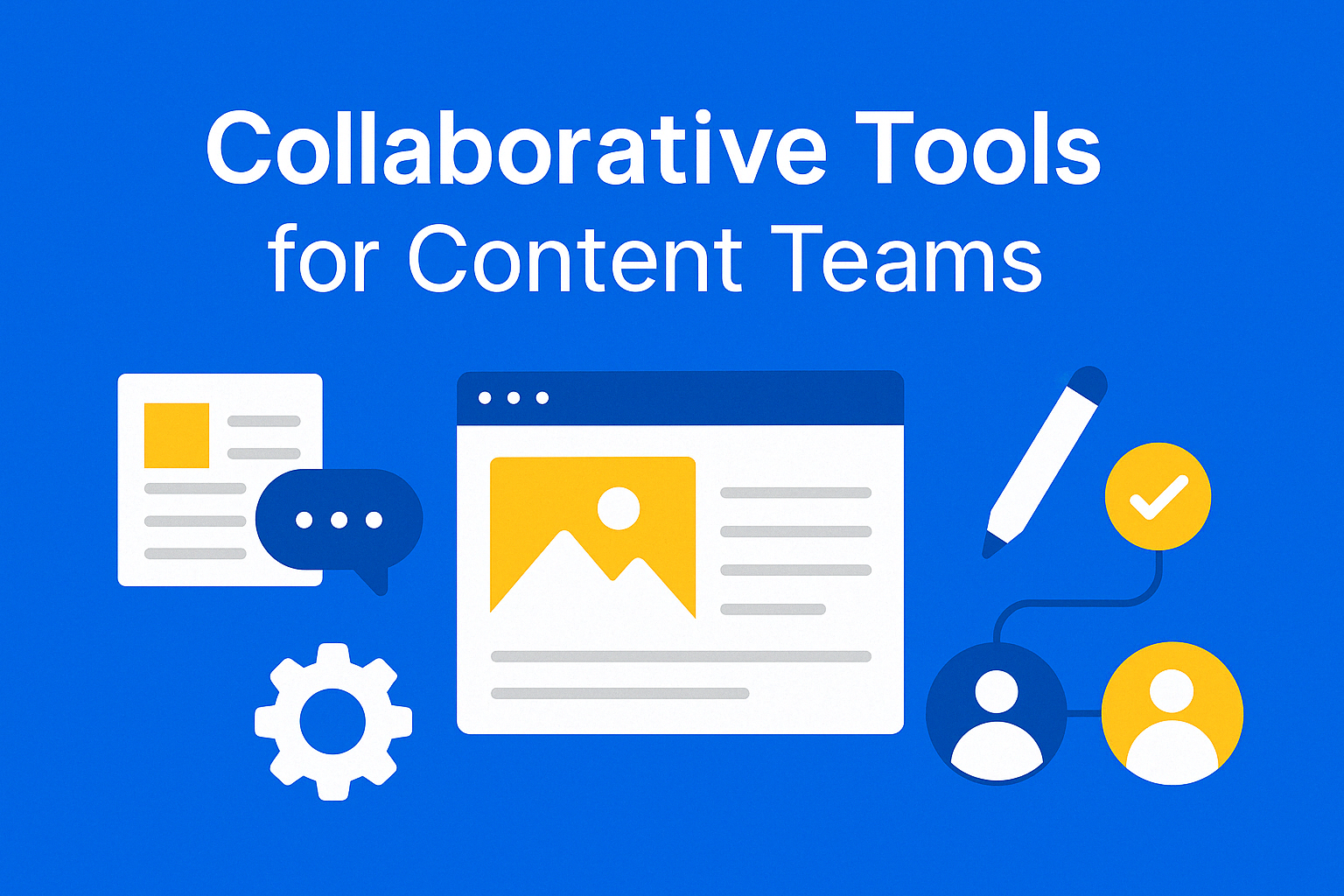Ending the Chaos in Content Management for Remote Teams
Remote content teams often face chaos from scattered files, fragmented feedback, and inefficient workflows. Using a centralized platform like EasyContent simplifies collaboration, enhances productivity, automates approvals, and secures content, transforming chaos into streamlined efficiency.

Although working remotely has become the norm even if handling materials in such an atmosphere sometimes feels like a continuous obstacle course. When communication spans numerous channels, files are distributed over several platforms, and input arrives from all directions, losing control of the process is natural.
Imagine a normal situation: a writer produces material and emails it; an editor leaves comments in Google Docs; a manager leaves further ideas in Slack; and the final version somehow disappears on the cloud. This method not only slows down projects but also causes team frustration, duplicate versions, and pointless mistakes.
While many businesses have adopted remote labor, most still lack a good method for content organization. Lack of a centralized platform presents many difficulties:
Version control problems whereby several team members unintentionally work on several versions of the same document. Feedback delays impede down publishing and cause pointless changes.
Unorganized communication, in which emails and texts readily lose comments and recommendations a fragmented content database that makes it challenging to locate the appropriate document version as needed. Along with slowing down processes, all these issues compromise content quality, raise team member tension, and complicate brand consistency maintenance.
How a Single Platform Can Solve These Problems
Remote teams must replace disconnected technologies with a single centralized content management system if they are to prevent anarchy. This solution guarantees seamless teamwork, automation of important tasks, and well defined duties for every team member.
One excellent example of a tool that provides just this—a single location where teams may work on content without wasting time looking for files, waiting for approvals, or handling constant revisions—easycontent. Content management gets simpler, faster, and more productive with features including automated processes, a centralized content database, and built-in collaboration capabilities.
What’s Next?
We will discuss in the remainder of this blog how one platform might:
Streamline team member communication.
Accelerate approvals and cut pointless changes.
Guarantee of well defined procedures and improved content organization
Guide teams toward wiser, not more demanding behavior.
EasyContent could be the game-changing answer your company has been waiting for if it is seeking for a means to simplify content administration and increase output.
Discover how one tool might change the way your team generates, edits, and publishes materials by continuing to read.
The Challenges of Remote Content Management
Although it sounds handy, for many teams managing content remotely soon becomes a logistical nightmare. Without the correct framework in place, content creation slows to a crawl, processes fall apart, and teamwork gets scattered. Although remote work gives freedom, it also brings additional difficulties that could overwhelm content management.
One of the biggest issues is scattered communication. Feedback gets lost across emails, chat messages, and multiple versions of the same document. A writer might receive one set of suggestions in Slack, another in an email thread, and a third in a shared document, making it difficult to consolidate changes. This lack of centralized communication leads to delays, misunderstandings, and an inefficient revision process.
Another typical difficulty is inconsistent processes. Tasking can slip through the gaps without a methodical strategy to content approvals and publication. Writers turn in drafts, but without a clear approval mechanism, those drafts can lie unread for weeks. Unneeded back-and-forth and missed deadlines could result from editors and managers not knowing when material is ready for review.
For remote teams, version control problems also cause great trouble. Confusion develops naturally when several people work on the same material without a suitable system. While an editor may still be working on an older version, a writer may update a document and result in contradicting changes and lost effort. Teams run the danger of publishing obsolete or inaccurate material without a single, trustworthy source of truth.
Remote content management gains still another level of complication from security concerns. Tracking access and making sure only authorised team members may make changes becomes more difficult when files are dispersed over several storage systems. Sensitive material can find the wrong hands, and without a centralized platform it is difficult to keep data security rules followed.
These challenges highlight the need of having a single, neat content management system keeping all the data in one place. EasyContent provides a centralized workspace where teams may create, modify, and approve content without losing sight of advancement. Teams may streamline their processes and run more efficiently rather than managing scattered comments, inconsistent practices, and version control nightmares.
Remote teams can solve typical content management issues by using a platform meant for content collaboration and concentrate on what really counts—creation of excellent work free from needless worry.

Why a Single Content Management Platform is the Solution
Content management seems like an uphill fight since remote teams can contend with dispersed processes, poor communication, and version control problems. Teams should have one platform that ties everything together instead of hopping between several tools, losing track of edits, and chasing approvals. That's where a centralized content management system finds application.
Teams may save all drafts, final copies, and comments all in one location using a platform like EasyContent. Searching across cloud folders or email threads won't help you locate the most recent version of a document.Every object is neatly arranged, readily available, and safely preserved to ensure team members always have what they need close at hand.
Moreover, using a single platform helps real-time teamwork to be much easier. Writers, editors, and stakeholders may work easily making changes, adding comments, and tracking updates without waiting for files to be exchanged back and forth. Instead of dealing with unnecessary delays and endless revisions, teams can keep projects moving efficiently.
One of the biggest frustrations in content management is keeping track of who is responsible for what. With automated workflows, tasks move from one stage to another without the need for constant manual follow-ups.Writers know when their drafts are ready for review; editors get alerts when they need comments; final approvals occur free from delays. This guarantees that no piece of material disappears during the process and helps to save wasted time.
One other revolutionary tool is version control. Working on the same document several team members might easily cause confusion. In an old email chain, someone can unintentionally lose essential comments, overword significant improvements, or utilize an obsolete draft. By tracking all modifications and guaranteeing that the most recent, approved version is utilized, a content management system removes these hazards.
EasyContent lets you access all of these advantages and more. It provides remote teams with the organization and tools they require to create excellent work free from the usual anarchy. When teams move to a single platform, they can concentrate on what truly counts—making fascinating, well-organized content that fulfills goals and produces results—rather than wasting time on administrative chores that aren't necessary.
Key Features to Look for in a Remote Content Management Platform
Remote content management has unique difficulties from fragmented communication to unclear roles. Teams need a content management system that centralizes the whole workflow if they are to keep everything working as it should. Since not all platforms are developed the same, knowing what elements to search for can significantly impact team productivity and content quality.
On a well-organized platform, task assignments and approvals let to exactly identify who is in control at every level of content generation. Teams which lack this can struggle with ownership, which causes delays and missed deadlines. Content flows naturally when chores are given to the correct persons with automated approvals, therefore guaranteeing a fluid publishing process.
Another must-have feature is role-based access control to define who can view, edit, or approve content.Too many people having unlimited access in remote teams can lead to issues including inadvertent overwrites, contradictory modifications, or illegal editing. Setting role-based permissions helps a content manager to guarantee that every team member only has access to what they need, thereby maintaining organization and security of the materials.
Cloud-based accessibility is another game-changer, allowing team members to work from anywhere without waiting for updates or file transfers. Remote teams need a system where content is stored in one place and accessible in real time. This eliminates the hassle of downloading and re-uploading documents, ensuring that the entire team is always working on the latest version.
Scattered comments are one of the main problems in content management. Integrated communication tools are thus quite important. Teams should search for a platform that maintains all conversations inside the system instead of depending on never-ending email chains or jumping between several apps for feedback. This helps comments, recommendations, and approvals remain closely related to the content itself, therefore eliminating misunderstandings and lessening needless back-and-forth.
EasyContent provides all of these tools and more, so remote teams trying to simplify their content creation process would find it perfect. Teams may concentrate on doing excellent work free from the normal conflict coming from remote work by way of job automation, role-based permissions, real-time access, and built-in communication features. Choosing the appropriate content management system will assist to reduce stress, speed processes, and improve general quality of products.

How EasyContent Simplifies Content Management for Remote Teams
Content management done remotely comes with several challenges. Without a centralized system, teams contend with scattered files, misaligned processes, and never-ending feedback loops. This slows down production of material and makes cooperation unnecessarily tough. EasyContent consequently comes in handy since it guarantees flawless teamwork from beginning to end and provides a disciplined platform to keep everything in one place.
With a unified content hub, EasyContent eliminates the chaos of multiple documents spread across different storage locations. From brainstorming ideas to final approvals and publishing, everything stays in one secure space. No more hunting down the latest draft or digging through emails for feedback—everything is organized and easily accessible.
Automated workflows make content production faster and more efficient. Managers, editors, and writers no longer have to rely on hand-made reminders or follow-up to forward materials. EasyContent tracks development at every level, notifies stakeholders when action is required, and automatically assigns chores so simplifying the whole process. Less bottlenecks, less delays, and a far better workflow follow from this.
Collaboration can easily get messy in remote teams, especially when multiple people are reviewing and editing the same document. With collaborative editing, EasyContent allows multiple users to work on content simultaneously without confusion. Everyone can add comments, suggest changes, and track edits in real time—without worrying about losing important updates or overwriting someone else’s work.
Security is another major concern for remote teams handling sensitive content. EasyContent provides a secure and scalable solution, ensuring that content stays protected while also growing with your team’s needs. With role-based access control, team members only see and edit what’s relevant to their role, reducing the risk of unauthorized changes or data leaks.
Since EasyContent combines security, speed, and structure in a way that suits everyone, it is the ideal way remote teams might free up content management. It simplifies content creation by organizing everything in order, managing chores requiring a lot of effort, and motivating everyone to collaborate correctly, therefore accelerating the process. Teams should concentrate on what actually counts: producing excellent work free from usual challenges instead of juggling unorganized procedures and poor communication.
Real-World Benefits of Using a Single Platform
Content management across several tools usually generates more issues than it fixes. Teams squander precious time looking for the newest document version, battling dispersed comments, and following approvals across countless email channels. Like EasyContent, a single content management system addresses these problems by grouping the whole workflow into one orderly environment. The outcome is more stress-free, efficient, and productive content development process.
Productivity rises among one of the main benefits of a consolidated platform. Team members may access all they need in one location instead of sorting through emails and folders looking for the proper file. Approvals happen faster, teams may concentrate on producing content rather than handling administrative tasks as processes grow more regimented.
A structured content process also leads to better content quality. When feedback is scattered across multiple channels, important suggestions get overlooked, leading to inconsistencies in tone, style, and messaging.EasyContent guarantees that every piece of content passes a clear revision process by keeping comments inside the platform. Effective collaboration between editors and writers allows for real-time improvements in all published materials and consistency across all of them.
Keeping everyone on the same page presents still another major challenge for content teams. A single platform defines defined roles and responsibilities, hence enhancing team alignment. Writers know when to turn in drafts; editors know when changes are needed; managers have complete view of project development. This guarantees that every team member is aiming for the same objective under clear knowledge of what has to be done next, therefore removing uncertainty.
Faster turnaround times help teams also by simplifying procedures. Delays might arise from content becoming caught awaiting changes or authorization. By automating these tasks, a centralized system avoids congestion before it slows down things and sends alerts when action is required. This allows companies to keep up with rigorous content schedules since material travels from ideation to publication far faster.
EasyContent offers a disciplined, dependable answer for content creators, marketers, and remote teams trying to increase effectiveness. It guarantees teams to create excellent work on schedule free from needless obstacles, therefore removing the frequent content management hassles. Content teams that use a single platform may work smarter, coordinate more effectively, and eventually produce more powerful material with simplicity.
Why Centralized Content Management is Essential for Remote Teams
At first, juggling material among several tools seems reasonable, but over time it causes more difficulties than it solves. Lost files, poor communication, and countless revision cycles slow down teams and complicate content creation than it should be. Disorganized processes waste precious time attempting to keep everyone on the same page, tracking down approvals, and consolidating comments.
For remote teams, efficiency is everything. Without a centralized system, managing content becomes a chaotic process that drains productivity. This is why having a single, streamlined platform like EasyContent is a game-changer. It eliminates the friction caused by scattered workflows by bringing everything—tasks, approvals, collaboration, and publishing—under one roof. Writers, editors, and managers can work seamlessly without having to switch between different tools or chase down missing information.
A well-organized content process isn’t just about saving time. It’s about empowering teams to focus on what they do best—creating high-quality content. Instead of struggling with inefficient systems, teams can spend more time refining ideas, strengthening messaging, and producing work that truly resonates with their audience. With structured workflows and automation handling repetitive tasks, creativity and strategy take center stage.
The future of content management isn’t about using more tools—it’s about using the right one.Remote teams require the structure, automation, and teamwork tools EasyContent offers to remain orderly and efficient. Simplifying processes, clearing obstacles, and maintaining everything in one location helps teams to operate smarter rather than harder. Adopting a platform that simplifies content management is not just a need but also a must in the fast-paced digital environment.





